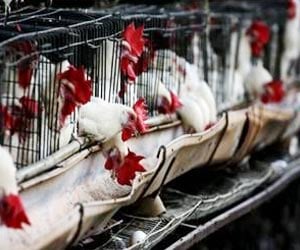Scientists at the Georogia Tech Research Institute (GTRI) have developed a new biosensor that can detect avian influenza in minutes.
Scientists at the Georogia Tech Research Institute (GTRI) have developed a new biosensor that can detect avian influenza in minutes.
Jie Xu, a research scientist in GTRI’s Electro-Optical Systems Laboratory (EOSL), has revealed that the biosensor is economical, field deployable, sensitive to different viral strains, and does not require any labels or reagents.“We can do real-time monitoring of avian influenza infections on the farm, in live-bird markets or in poultry processing facilities,” said Jie Xu.
Worldwide, there are many strains of avian influenza virus that cause varying degrees of clinical symptoms and illness. The only way to stop the spread of the disease is to destroy all poultry that may have been exposed to the virus.
“With so many different virus subtypes, our biosensor’s ability to detect multiple strains of avian influenza at the same time is critical,” noted Xu.
The researchers assessed the ability of their biosensor to detect two avian influenza strains that previously infected poultry, and found that it could detect a solution containing very few virus particles.
“The technology that Georgia Tech developed with our help has many advantages over commercially available tests -- improved sensitivity, rapid testing and the ability to identify different strains of the influenza virus simultaneously,” said David Suarez, a collaborator on the project and research leader of exotic and emerging avian viral diseases in ARS’ Southeast Poultry Research Laboratory in Athens.
Xu is currently working with Suarez to test new unique antibodies and different strains with the biosensor.
“We are continuing our collaboration and have provided additional money to Georgia Tech to move the project along faster. Since this technology is already set up so that you can use multiple antibodies to detect different influenza subtypes, we are going to extend the work to include the H5 subtype,” said Suarez.
A report on the new biosensor has been published online in the journal Analytical and Bioanalytical Chemistry.
Source-ANI
VEN/C
 MEDINDIA
MEDINDIA
 Email
Email









